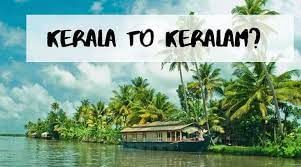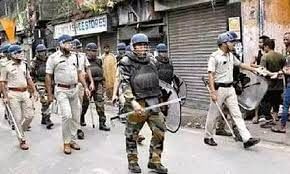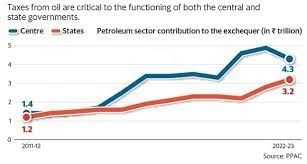UPSC Daily Current Affairs- 10th August 2023 | Current Affairs & Hindu Analysis: Daily, Weekly & Monthly PDF Download
GS-I
Amazon Cooperation Treaty Organisation (ACTO)
Subject: Geography

Why in News?
In a landmark move, 8 South American countries have joined forces to address the critical issue of deforestation in the Amazon rainforest at the Amazon Cooperation Treaty Organisation (ACTO) summit, hosted by Brazil.
- It is intriguing to know that this summit is the first gathering of its kind in 14 years since the group was established.
What is ACTO?
- Formation: ACTO is an international organization established to safeguard the Amazon basin and facilitate its sustainable development through international collaboration.
- Founding Treaty: The Amazon Cooperation Treaty was crafted and signed on July 3, 1978, by Bolivia, Brazil, Colombia, Ecuador, Guyana, Peru, Suriname, and Venezuela.
- Evolution into ACTO: In 1995, these countries formalized their commitment by founding ACTO to actively pursue the objectives set forth in the original treaty.
- Multilingual Platform: ACTO operates in four official languages: Dutch, English, Portuguese, and Spanish.
Need for ACTO
- Deforestation: Clearing of land for agriculture, logging, mining, and infrastructure development leads to extensive deforestation, reducing the forest’s size and disrupting ecosystems.
- Climate Feedback Loop: Deforestation disrupted the Amazon’s role as a carbon sink, potentially turning it into a carbon source and exacerbating climate change.
- Illegal Logging: Unregulated and unsustainable logging practices contribute to deforestation, habitat destruction, and loss of biodiversity.
- Indigenous Land Encroachment: Encroachment on indigenous lands and territories disrupts traditional ways of life and cultural practices, impacting both communities and ecosystems.
- Forest Fire: Uncontrolled fires, often intentionally set for land clearance, can spread rapidly, destroying vast areas of forest and releasing carbon dioxide into the atmosphere.
ACTO’s Conservation and Development Initiatives
- Amazonian Management: The ACTO member nations recognize that effective management of the Amazon basin is pivotal for advancing the well-being of its inhabitants.
- Programs and Agreements: Collaborative programs and agreements have been established to ensure biodiversity preservation, promote conservation efforts, and manage the region’s resources.
- Project GEF Amazonas: Funded by the Global Environment Facility, this program aims to secure agreement on a renewable and integrated water supply for sustainable development.
- ACTO Biodiversity Program: This program focuses on maintaining a harmonious biological equilibrium to prevent fragmentation of Amazonian ecosystems.
Key Milestone: The Manaus Declaration (2004)
- Purpose: ACTO played a pivotal role in formulating the Manaus Declaration in 2004, which coordinated the development of the vast rainforest area covering approximately 2.9 million square miles.
- Commitment Reiteration: The declaration reaffirmed member countries’ dedication to fostering social and economic development in the Amazon while preserving its unique cultures.
Source: The Hindu
GS-II
Ill-effects of online gaming must be tackled
Subject: Polity and Governance

Why in News?
Online gaming in India has the potential to be a multi-billion-dollar industry, but it comes with negative fallouts as well.
About Online Gambling
- Online gambling involves participating in gambling activities through the internet by placing bets or wagers on games and events to win money or prizes.
- It can be played on various devices and involves virtual chips or digital currencies instead of cash.
- The global online gambling market was valued at USD 63.53 billion in 2022 and is expected to grow at a CAGR of 11.7% from 2023 to 2030, with the Asia-Pacific region being the largest market.
- There are different types of online gambling, including casino games like slots, blackjack, and roulette, sports betting, poker, and lottery.
- It is regulated in most countries, including India, with varying degrees of restrictions and laws.
Potential of the Gaming market in India
- The Indian gaming industry is likely to grow from Rs. 22,972.936 crore in 2022 to Rs. 41,023.1 crore in 2025 at a compounded annual growth rate (CAGR) of 28-30 per cent.
- It is expected that the number of gamers in India will increase from 42 crore in 2022 to 50 crore by 2025.
- In fact, with 71 percent of urban population engaged in casual or professional games, India ranks among the top 10 gaming countries in the world.
- As per a latest study by Statista and Kepios, India holds 8th position amongst the top-10 nations which tweet the most about gaming.
- India has even produced three major unicorns in the online gaming industry, namely, Dream Sports, Games 24×7 and MPL.
Advantages of Online Games
- Online gaming industry is expected to provide economic benefits in form of revenues.
- The industry will create jobs, especially in software development and related sectors.
- The growth in gaming industry shows that it has potential to attract significant global investments.
- Online gaming, especially those involving skills is a great source to develop early learning skills for youngsters.
- Even though there are financial risks involved, there has been a steady rise in number of people earning income by playing online games.
Issues with Online Gaming
- Addiction issues: Many social activists, government officials and those in law enforcement believe that online games like rummy and poker are addictive in nature; and when played with monetary stakes may lead to other issues.
- Some people are losing money and falling into a debt trap. Some of the victims took their own lives.
- The study shows that online games are addictive whether these games really involve skill or mere tricks.
- Social Risks: Reportedly, there have been a few instances where youngsters, faced with mounting debts due to losses in online games have committed other crimes like theft and murder.
- Loss of revenue: Shifting of users to grey or illegal offshore online gaming apps not only results in loss of tax revenue for the State and job opportunities for locals but results in users being unable to avail remedies for any unfair behaviour or refusal to pay out winnings.
- Manipulative websites: Some experts also believe that online games are susceptible to manipulation by the websites operating such games.
- There is a possibility that users are not playing such games against other players, but against automatic machines or ‘bots’, wherein there is no fair opportunity for an ordinary user to win the game.
Steps taken by the government to regulate this sector
- Legal Jurisdiction: The state legislators are, vide Entry No. 34 of List II (State List) of the Seventh Schedule of the Constitution of India, given exclusive power to make laws relating to betting and gambling.
- Public Gambling Act, 1867: At present, India has just one central law that governs gambling in all its forms.
- It’s called the Public Gambling Act, 1867, which is an old law, ill-equipped to handle the challenges of digital casinos, online gambling and gaming.
- Status of Type of Games Allowed: Staking money or property on the outcome of a ‘game of chance’ is prohibited and subjects the guilty parties to criminal sanctions.
- However, placing any stakes on the outcome of a ‘game of skill’ is not illegal per se and may be permissible.
- It is important to note that the Supreme Court recognized that no game is purely a ‘game of skill’ and almost all games have an element of chance.
- Common Gaming House: Another concept common to the gaming law in most states is the idea of a ‘common gaming house’.
- Owning, keeping, or having charge of a common gaming house or being present for gaming in any such common gaming house is ordinarily prohibited in terms of these state gaming laws.
- Laws in Various States: States like Delhi, Madhya Pradesh, and Uttar Pradesh have adopted the Public Gambling Act with some amendments.
- However, other regions like Goa, Sikkim, Daman, Meghalaya, and Nagaland, have drafted specific laws to regulate public gambling in their jurisdictions.
Way Forward:
Similar to social media and e-commerce companies, online gaming platforms will also have to appoint a compliance officer who will ensure that the platform is following the norms, a nodal officer who will act as a liaison official with the government and assist law enforcement agencies, and a grievance officer who will resolve user complaints.
The legal landscape in India is complex and varies by state, so individuals should be aware of their state’s laws and only participate in licensed online gambling activities.
Source: The Hindu
Renaming Kerala: From Kerala to Keralam
Subject: Polity and Governance

Why in News?
The Kerala Assembly’s recent unanimous resolution to rename the state as “Keralam” in the Constitution and official records has sparked discussions about the historical origins of the name and the process of renaming a state in India.
Renaming Kerala: Resolution and Historical Context
- Unanimous Decision: The Kerala Assembly, led by CM, passed a resolution urging the Centre to rename the state as “Keralam” in both the Constitution and official records.
- Language Basis: The resolution highlights that the Malayalam name of the state is “Keralam,” and states were formed based on language on November 1, 1956. The resolution seeks alignment between the Malayalam name and its representation in official documents.
Origin of the ‘Kerala’ Name
- ‘Kerala’ and Asoka’s Edict: The earliest recorded mention of ‘Kerala’ is in Emperor Asoka’s Rock Edict II of 257 BC, where the local ruler is referred to as “Keralaputra” (son of Kerala) and “son of Chera” from the Chera dynasty.
- ‘Keralam’ from ‘Cheram’: Scholars speculate that ‘Keralam’ could have derived from ‘Cheram.’ Dr. Herman Gundert, a German scholar, proposed that ‘keram’ is the Canarese (Kannada) form of ‘cheram,’ suggesting that ‘Keralam’ could mean the region between Gokarnam and Kanyakumari, stemming from the root ‘cher’ meaning to join.
Demand for a Unified State
- Aikya Kerala Movement: In the 1920s, the Aikya Kerala movement gained momentum, advocating for a unified state for Malayalam-speaking people. It aimed to integrate Malabar, Kochi, and Travancore into a single territory.
- Cultural Unity: The movement was driven by the shared language, cultural traditions, history, and customs of the Malayalam-speaking population.
Formation of Modern Kerala
- Travancore-Cochin State: In 1949, Travancore and Kochi merged, forming the Travancore-Cochin State.
- State Reorganisation Commission: The State Reorganisation Commission recommended the creation of Kerala as a state for Malayalam-speaking people. The inclusion of Malabar and Kasargod and the exclusion of certain areas were proposed.
- Birth of Kerala: On November 1, 1956, the state of Kerala was officially formed, referred to as “Keralam” in Malayalam and “Kerala” in English.
Conclusion
- The resolution to rename Kerala as “Keralam” reflects the historical and cultural significance attached to the state’s name.
- The process of renaming a state underscores the federal structure of India, where Centre-State collaboration is essential for such significant changes.
Source: Indian Express
Project Devika
Subject: Governance

Why in News?
Recently, it was announced that North India’s first River Rejuvenation Project Devika is nearing its completion.
Background:-
- Built at a cost of over Rs 190 crore on the lines of ‘Namami Ganga’, the Project was launched by Prime Minister Shri Narendra Modi
About Project Devika:-
- Launched:2019.
- It was launched under the National River Conservation Plan (NRCP).
- Ministry: Ministry of Jal Shakti.
- Objectives: Project Devika aims to rejuvenate the Devika River.
Salient Features of Project Devika:-
- Under the project, bathing “ghats” (places) on the banks of the Devika River will be developed.
- Further, the encroachments will be removed, and natural water bodies will be restored.
- The catchment areas will also be developed along with cremation grounds.
- The Liquid Waste Management Project involves creating a network of pipes and manholes connecting households under the Project.
- A Solid Waste Management Project is additionally planned to further enhance the river’s restoration.
- The project also includes the construction of three sewage treatment plants, the development of two cremation ghats, protection fencing and landscaping, small hydropower plants, and three solar power plants.
About River Devika:
- Origin: Devika River originates from the hilly Suddha Mahadev temple in the Udhampur district of Jammu and Kashmir and flows down towards western Punjab (now in Pakistan) where it merges with the Ravi River.
- The river holds religious significance as it is revered by Hindus, as the sister of the river Ganga.It is believed that Devika River is a manifestation of the Goddess Parwati.
Source: PIB
GS-III
Small modular nuclear reactors: Can they help India achieve net-zero?
Subject: Economics

Why in News?
The world’s quest to decarbonise is guided by the UN SDG 7: “to ensure access to affordable, reliable, sustainable and modern energy for all”.
- Small modular reactors - a type of nuclear reactor - can be helpful to India in this regard.
Challenges of Decarbonisation:
- The world still depends on fossil fuels for 82% of its energy supply.
- The share of electricity in final energy consumption will also increase by 80-150% by 2050.
- The recent uptick in coal consumption in Europe, despite the increase in solar and wind power.
- This suggests that reliable electricity resources are critical to ensure the deep decarbonisation of power generation.
- The demand for critical minerals like lithium, nickel, cobalt, and rare earth elements, required for clean-energy production technologies, is likely to increase by up to 3.5x by 2030.
- The environmental and social impacts of developing several new mines and plants (of critical minerals).
- The top three mineral-producing and processing nations control 50-100% of the current global extraction and processing capacities, posing geopolitical and other risks.
Issues with Nuclear Power and Alternative:
- Nuclear power plants (NPPs) generate 10% of the world’s electricity and help avoid 1.5 billion tonnes of CO2 emissions every year.
- NPPs’ grid integration costs are lower than those associated with variable renewable energy (VRE) sources because NPPs generate power 24x7 in all kinds of weather.
- Nuclear power also provides valuable co-benefits like high-skill jobs in technology, manufacturing, and operations.
- However, conventional NPPs have generally suffered from time and cost overruns and risks of nuclear accidents (Fukushima, Japan).
- As an alternative, several countries are developing small modular reactors (SMRs).
What are the Small Modular Reactors (SMRs)?
- About:
- They are advanced nuclear reactors that have a power capacity of up to 300 MW per unit, which is about one-third of the generating capacity of traditional nuclear power reactors.
- SMRs are:
- Small: They are physically a fraction of the size of a conventional nuclear power reactor.
- Modular: Being mobile and agile technology, it makes it possible for systems and components to be factory-assembled and transported as a unit to a location for installation.
- Reactors: Which harnesses nuclear fission to generate heat to produce energy.
- Advantages:
- SMRs are designed to operate for 40-60 years with capacity factors exceeding 90%.
- They can produce a large amount of low-carbon electricity. They could be paired with and increase the efficiency of renewable sources in a hybrid energy system.
- They can be manufactured off-site - significantly saving construction time.
- They can contribute to reduced build and running costs (designed to require lesser fuel and fewer staff for location assembly, maintenance and operation) and increased efficiency.
- SMRs can generate less electricity when demand is down and are particularly useful for power generation in remote locations.
- SMRs can be installed in decommissioned thermal power plant sites by repurposing existing infrastructure.
- Safety features of SMRs:
- SMRs are designed with a smaller core damage frequency (the likelihood that an accident will damage the nuclear fuel) and source term (a measure of radioactive contamination) compared to conventional NPPs.
- They also include enhanced seismic isolation for more safety.
- SMR designs are also simpler and include several passive safety features, resulting in a lower potential for the uncontrolled release of radioactive materials into the environment.
- Disadvantages:
- Lack of development: They do not currently exist as reactors for power generation.
- Cost-effectiveness depends on production: Large-scale production of SMRs is required to achieve its economic benefits.
- Licensing issues: Historically, the licensing process was developed for large commercial reactors and the licensing process for new reactor designs is a lengthy and costly process.
Challenges for India:
- India’s Central Electricity Authority (CEA) projects that the generation capacity of coal-based thermal power plants (TPPs) in India must be increased to 259,000 MW by 2032 from the current 212,000 MW.
- The CEA also projects that TPPs will provide more than half of the electricity generated in India by 2031-2032 while VRE sources and NPPs will contribute 35% and 4.4%, respectively.
- Since India has committed to become net-zero by 2070, the country’s nuclear power output needs a quantum jump.
Way Ahead for India:
- The costs for manufacturing SMRs will decline when reputed companies with experience in manufacturing NPPs (BHEL, L&T or Godrej Industries) manufacture SMRs, with technology transfer from abroad.
- This will allow zero-carbon nuclear power to expand by attracting “green” finance from the Green Climate Fund and international investors.
- Attracting investments from the private sector (in PPP mode) is important to decarbonise India’s energy sector.
- For example, the Atomic Energy Act will need to be amended to allow the private sector to set up SMRs.
- Efficient regulatory regime for SMRs comparable to that in the civil aviation sector - which has more stringent safety requirements - is important.
- This requires the cooperation between the respective regulators with the International Atomic Energy Agency (IAEA) to harmonise their regulatory requirements.
Conclusion:
- The transition from coal-fired power generation to clean energy sources poses major challenges for all countries, as there is a widespread consensus that solar and wind energy alone will not suffice to provide reliable and affordable energy for everyone.
- This was the reason SMRs were included in the US-India joint statement after the Indian PM met U.S. President in June 2023.
Source: The Hindu
Criminal case against Assam Rifles
Subject: Defence and Security

Why in News?
In an unprecedented move, the Manipur Police have registered a criminal case against the Assam Rifles for obstruction of duty and criminal intimidation.
- The police have accused the personnel of the 9th battalion of the Assam Rifles of the arrogant act of giving a chance to the accused Kuki militants to escape freely to a safe zone.
- Army, however, refuted the claim. It said that the Assam Rifles Battalion acted strictly in accordance with the mandate of the unified headquarters and strict enforcement of buffer zone guidelines.
- As per the defence officials, the place where the police team wanted to proceed to was a “buffer zone”.
- The Centre has deployed Central armed police forces and the Army in the “buffer zones” in the foothills where Kuki and Meitei settlements lie adjacent to each other.
- There were instructions from the combined headquarters that only Central security forces would operate there.
- As per the defence officials, the place where the police team wanted to proceed to was a “buffer zone”.
The Assam Rifles
- About
- Assam Rifles is one of the 7 Central Armed Police Forces (CAPFs) that come under the MHA’s administrative control.
- The other forces being: the Central Reserve Police Force (CRPF), the Border Security Force (BSF), the Indo-Tibetan Border Police (ITBP), the Central Industrial Security Force (CISF), National Security Guard (NSG) and the Sashastra Seema Bal (SSB).
- Besides maintaining law and order in the Northeast (a task it performs together with the Army), the Assam Rifles also guards the border with Myanmar in theregion.
- Assam Rifles is one of the 7 Central Armed Police Forces (CAPFs) that come under the MHA’s administrative control.
- Historical Background
- Its history dating back to 1835 when its precursor, Cachar Levy, was formed in the Northeast to protect British Tea estates and their settlements against tribal raids.
- Over the period of time, it was expanded and rechristened Assam Military Police Battalion, with additional battalions.
- It was later renamed as Assam Rifles. This is where the dual structure was perhaps born.
- This is because even as it continued to operate as a police force, the‘Rifles’ tag indicated it was on a par with Army units.
- Contributions of Assam rifles
- Since its formation in 1835, Assam Rifles has gone on to fight in two World Wars, the Sino-Indian war of 1962.
- It is used as an anti-insurgency force against militant groups in the North East.
- The Post-Independence role of the Assam Rifles continued to evolve ranging from
- conventional combat role during Sino-India War 1962,
- operating in foreign land as part of the Indian Peace Keeping Force (IPKF) to Sri Lanka in 1987 (Op Pawan)
- to peacekeeping role in the North-Eastern areas of India.
- It remains the most awarded paramilitary force in both pre- and post-independent India.
Uniqueness of Assam Rifles: Dual Control
- It is the only paramilitary force with a dual control structure.
- The administrative control of the force is with the MHA.
- Its operational control is with the Indian Army, which is under the Ministry of Defence (MoD).
- Hence, salaries and infrastructure for this force is provided by the MHA, but the deployment, posting, transfer and deputation of the personnel is decided by the Army.
What are the Issues associated with dual control of Assam rifles?
- Problems of coordination
- Many analysts believe that this dual control structure is arbitrary, unreasonable and in violation of the rights of Assam Rifles personnel.
- It also leads to problems of coordination.
- Disparity in pay scale
- Although, the Assam Rifles personnel operate alongside the Army on similar duties, there is a disparity in the pay scale.
- Army personnel enjoy better perks and retirement benefits which are far higher compared to CAPFs under MHA.
- On the other hand, Army personnel also retire early, at 35, while the retirement age in CAPF is 60 years.
- Army personnel also get one rank one pension which is not available to CAPFs.
What are the Stands of different institutions on the issue of dual control of Assam rifles?
- Stand of MHA
- MHA believes that there is no reason to make an exception for the Assam Rifles given all other CAPFs are under the total control of the MHA.
- It argues that all the border guarding forces are under the operational control of the MHA.
- Hence, Assam Rifles coming under MHA will give border guarding a comprehensive and integrated approach.
- MHA also contend that Assam Rifles continues to function on the pattern set during the 1960s and
- the ministry would want to make guarding of the Indo-Myanmar border on the lines of other CAPFs.
- Stand of MoD
- Army believes that the Assam Rifles has worked well in coordination with Army and frees up the armed forces from many of its responsibilities.
- This enables army to focus on its core strengths.
- Hence, there is no need to fix what isn’t broken
- It has also argued that Assam Rifles was always a military force and not a police force and has been built like that.
- It has argued that giving the control of the force to MHA or merging it with any other CAPF will confuse the force and jeopardise national security.
- Army believes that the Assam Rifles has worked well in coordination with Army and frees up the armed forces from many of its responsibilities.
- Stand of Centre on this issue
- In 2013 that MHA first made a proposal to take operational control of the Assam Rifles and merge it with the BSF.
- However, it not be executed as no agreeable ground could be found.
- In November 2019, the MHA called for the merger of the Assam Rifles with the Indo-Tibetan Border Police (ITBP).
- Now, the Indian Army has started pushing for not only total control of Assam Rifles but also operational control over ITBP, which guards the Sino-Indian border
- The matter is said to be pending with the Cabinet Committee on Security and discussions are ongoing between the two ministries concerned.
- In 2013 that MHA first made a proposal to take operational control of the Assam Rifles and merge it with the BSF.
Source: The Hindu
Maya OS: Everything you need to know
Subject: Science and Technology

Why in News?
The Defence Ministry is taking a significant stride towards bolstering its cybersecurity by introducing an indigenous operating system named Maya OS.
- This move aims to replace Microsoft’s Windows OS on all ministry computers, ensuring enhanced protection against cyberattacks.
Understanding Maya OS
- Origin and Purpose: Maya OS is a homegrown operating system developed by the Union Ministry of Defence.
- Name’s Significance: Maya OS draws its name from the ancient Indian concept of illusion, signifying the deceptive appearance of reality.
- Open-Source Framework: Maya OS leverages the Ubuntu platform, embracing open-source principles by utilizing free and publicly available software. This approach enhances transparency, community collaboration, and customization possibilities.
- Chakravyuh Feature: Maya OS introduces the Chakravyuh feature, an end-point anti-malware and antivirus software. It acts as a protective layer between users and the internet, thwarting unauthorized access attempts and safeguarding sensitive data.
User Interface and Features
- Familiar Interface: Maya OS offers a user-friendly interface, mirroring the familiar look and feel of Windows, thereby ensuring a comfortable user experience.
- Application Compatibility: The OS supports commonly used software like Microsoft Office, Adobe Photoshop, AutoCAD, and more, enabling a seamless transition for users.
- Enhanced Security: Maya OS incorporates features such as cloud storage, encryption, digital signatures, and biometric authentication to fortify security measures.
Development Journey
- Initiation in Response to Threats: The development of this OS commenced in 2021, prompted by the rise in cyberattacks targeting India’s critical infrastructure and defence systems.
- Collaborative Efforts: A collaborative effort involving experts from various government agencies like DRDO, C-DAC, and NIC, along with Indian software companies and academic institutions, contributed to the development of Maya OS.
- Swift Progress: The development of Maya OS was accomplished within 6 months, reflecting the dedication and expertise of the collaborative teams.
Source: Indian Express
Exploring Distance Tax: Transition from Oil-Dependent Revenue
Subject: Economics

Why in News?
With the shift towards cleaner energy sources and the decline in oil consumption, governments are seeking alternative revenue sources to compensate for the loss of fuel tax income.
- One such solution is the implementation of distance tax, a mileage-based user fee that can potentially mitigate revenue loss while encouraging sustainable transportation practices.
Understanding Distance Tax
- Concept: Distance tax, also known as mileage-based user fees or road-user charges, is a taxation method based on motorists’ road usage and mileage. The tax is proportional to the distance driven, incentivizing responsible vehicle usage.
- Variable Rates: Distance tax rates can be flat, calculated per kilometer, or variable based on factors such as location and time. It can also vary according to the vehicle type.
- Technology Implementation: Distance tax can be tracked through various technologies like automatic number plate recognition, radio frequency identification, or GPS-based systems. The latter, especially using the GPS-based toll collection system, holds promise for implementation in India.
Advantages of Distance Tax
- Revenue Recovery: As fuel consumption decreases due to the adoption of cleaner energy sources, distance tax offers a fuel-neutral method to recover lost tax revenue.
- Encouraging Efficient Behavior: Distance tax promotes efficient vehicle usage, rewarding those who drive less and opting for environmentally friendly vehicles.
- Managing Congestion: The tax can help manage traffic congestion by encouraging the use of small vehicles with lower carbon footprints.
Comparing with Other Alternatives
- Fuel Tax Increase: Raising fuel tax rates is an option, but it might not align with the transition to cleaner energy sources and could negatively impact consumers.
- Annual Fees on EVs: Imposing annual fees on electric vehicles (EVs) could hinder the EV adoption rate.
- GST and Toll Tax Increase: Hiking GST on EVs or increasing toll tax and electricity tax is politically challenging.
Impact on Government Revenue
- Oil Tax Dependency: Governments heavily rely on fuel tax revenues. In India, petroleum contributed to over 17.5% of the Centre’s revenue in 2022–23, and VAT on petroleum products accounted for 15% of all states’ and UTs’ revenue.
- EV Transition Effects: The transition to EVs is predicted to reduce government revenue by 10.2%, equivalent to ₹1,457 crore, for Delhi by 2030. The Centre is also projected to lose 10% of its fuel tax revenue in Delhi due to EV adoption.
Way Forward
- Gamification and Rewards: Develop a smartphone app that tracks a user’s distance traveled and calculates their distance tax.
- Dynamic Pricing Based on Emission Levels: Implement a tiered distance tax system that charges vehicles with higher emissions more than those with lower emissions.
- Green Corridors and Bonus Miles: Designate certain routes as “green corridors” with reduced or waived distance tax rates and offer bonus miles or credits to users who choose these routes.
- Voluntary Reduction Challenges: Launch voluntary challenges where users commit to reducing their mileage for a set period.
- Carbon Offset Integration: Provide users with the option to use a portion of their distance tax payments to support carbon offset projects, such as reforestation or renewable energy initiatives.
Conclusion
- Distance tax stands out as a viable solution to balance revenue streams while encouraging responsible driving behavior and greener vehicle choices.
- It addresses the challenge of declining oil tax income while promoting a shift towards cleaner transportation methods.
Source: The Hindu
|
38 videos|5293 docs|1118 tests
|





















